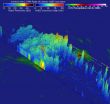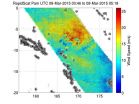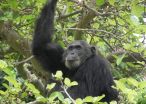NASA looks inside and outside of Tropical Cyclone Pam
2015-03-10
(Press-News.org) NASA's Terra satellite provided an outside look at Tropical Cyclone Pam while the RapidScat instrument that flies aboard the International Space Station provided an inside look at the surface winds generated by the storm. The GPM core satellite provided another inside look at Pam and provided data on where the heavy rainfall was occurring within the storm.
On March 9 and 10, Tropical Cyclone Pam strengthened to hurricane-force as it neared Vanuatu in the Southern Pacific Ocean.
On March 10 (11 p.m. local time), the Vanuatu Meteorology and Geo-Hazards Department (VMGD) issued a Severe Weather Warning Bulletin for the Northern Islands of Vanuatu. The warning noted that Tropical Cyclone Pam was located northeast of the Torba province, and was slowly moving in a south southeasterly direction. The VMGD forecast noted: Heavy rainfall expected to affect Torba, Sanma and Penama. Flash floods and expansion of river banks possible. People in these affected areas are advised to take extra precautions, especially those areas close to river banks and in low lying areas. For updated warnings, visit: http://www.meteo.gov.vu/.
The MODIS or Moderate Resolution Imaging Spectroradiometer instrument aboard NASA's Terra satellite captured a visible image of Tropical Cyclone Pam in the South Pacific Ocean on March 9 at 23:00 UTC (7:00 p.m. EDT). The image showed that Pam's center had consolidated within the previous 24 hours and was represented by a tight band of thunderstorms circling it. A wide band of fragmented thunderstorms in the northern and western quadrants of the storm were wrapping into the center from the north. Another thick, fragmented band of thunderstorms curved from the east to the south and west, where it wrapped into the center of circulation.
The MODIS image showed that the southern band of thunderstorms were over Gaua and Vanua Lava, the largest and second largest of the Banks Islands in Torba Province, Vanuatu.
The GPM or Global Precipitation Mission's Core Observatory flew over Pam on March 9, 2015 at 0501 UTC (1:01 a.m. EDT). Pam formed earlier in the day in the Solomon Islands in the Southern Pacific Ocean. Rainfall from GPM's Microwave Imager (GMI) showed that Pam was dropping rain at a rate of 133.5 mm (5.26 inches) per hour.
A 3-D image of the thunderstorms that make up Pam was created at NASA's Goddard Space Flight Center in Greenbelt, Maryland. In the 3-D image, very powerful thunderstorms measured by GPM's Radar (Ku Band) reached heights of over 16.6 km (10.3 miles). The precipitation within these tall storms are providing energy called latent heat that drives the circulation of the storm. Usually, the more heat that is being released, the more intense the storm will become. This heating works best when it occurs near the center of the storm.
The International Space Station's RapidScat instrument captured a look at Tropical Cyclone Pam's surface winds. RapidScat measured the winds from March 9 at 3:46 to 5:19 UTC. Measurements revealed that sustained winds at the surface were as high as 56 mph/90 kph/25 meters per second, near the center and northern quadrant of the storm.
On March 10 at 1500 UTC (11 a.m. EDT), Pam's maximum sustained winds had increased to 80 knots (92 mph/148.2 kph). Pam was centered near 10.8 south latitude and 170.2 east longitude, about 651 nautical miles (749.7 miles/ 1,206 km) northwest of Suva, Fiji. Pam has tracked south-southwestward at 4 knots (4.6 mph/7.4 kph).
The Joint Typhoon Warning Center (JTWC) predicts that Pam will be increasingly powerful and become a dangerous category five tropical cyclone on the Saffir-Simpson wind scale. JTWC expects Pam's winds to strengthen to about 140 knots (161.1 mph/259.3 kph) in the next couple of days as it continues in a southerly direction through the Southern Pacific Ocean.
INFORMATION:
ELSE PRESS RELEASES FROM THIS DATE:
2015-03-10
In an analysis of about 2,600 hospitalizations for severe sepsis, readmissions within 90 days were common, and approximately 40 percent occurred for diagnoses that could potentially be prevented or treated early to avoid hospitalization, according to a study in the March 10 issue of JAMA.
Patients are frequently rehospitalized within 90 days after having severe sepsis. Little is known, however, about the reasons for readmission and whether they can be reduced. Hallie C. Prescott, M.D., M.Sc., of the University of Michigan, Ann Arbor, and colleagues examined the most ...
2015-03-10
The prevalence of type 2 diabetes among 25,000 patients with familial hypercholesterolemia (a genetic disorder characterized by high low-density lipoprotein [LDL] cholesterol levels) was significantly lower than among unaffected relatives, with the prevalence varying by the type of gene mutation, according to a study in the March 10 issue of JAMA.
Statins have been associated with increased risk for diabetes, but the cause for this is not clear. One theory is that statins increase expression of LDL receptors and increase cholesterol uptake into cells including the pancreas, ...
2015-03-10
In an analysis of outcomes of about 12,000 patients who underwent transcatheter aortic valve replacement, death rate after one year was nearly one in four; of those alive at 12 months, almost half had not been rehospitalized and approximately 25 percent had only one hospitalization, according to a study in the March 10 issue of JAMA.
Following U.S. Food and Drug Administration approval in 2011, transcatheter aortic valve replacement (TAVR) has been used with increasing frequency for the treatment of severe aortic stenosis in patients who have high risks with conventional ...
2015-03-10
Among patients with a displaced fracture in the upper arm near the shoulder (proximal humeral), there was no significant difference between surgical treatment and nonsurgical treatment in patient-reported outcomes over two years following the fracture, results that do not support the trend of increased surgery for patients with this type of fracture, according to a study in the March 10 issue of JAMA.
Proximal humeral fractures account for 5 percent to 6 percent of all adult fractures; an estimated 706,000 occurred worldwide in 2000. The majority occur in people older ...
2015-03-10
ROCHESTER, Minn. -- Study results of one-year data for more than 12,000 patients who had transcatheter aortic valve replacement (TAVR) in the United States show an overall one-year death rate of 23.7 percent and a stroke rate of 4.1 percent, according to a study published in the March 10 issue of JAMA.
"Transcatheter aortic valve replacement has become transformational for patients who need a new valve and are at high-risk for surgery or inoperable. But we have been lacking long-term data for this group of patients who are considering this procedure," says study lead ...
2015-03-10
MADISON, Wis. -- In a study published March 9 in Nature Chemistry, University of Wisconsin-Madison chemistry Professor Kyoung-Shin Choi presents a new approach to combine solar energy conversion and biomass conversion, two important research areas for renewable energy.
For decades, scientists have been working to harness the energy from sunlight to drive chemical reactions to form fuels such as hydrogen, which provide a way to store solar energy for future use. Toward this end, many researchers have been working to develop functional, efficient and economical methods ...
2015-03-10
From AGU's blogs: More urban heat; less summer fog, on California coast
The summer fog that shrouds coastal southern California - what locals call the June Gloom - is being driven up into the sky by urban sprawl, according to scientists who have studied 67 years of cloud heights and urban growth in the region. Less fog may, at first, seem like a good thing. But less fog is bad news for native plants in the coastal hills and mountains, which depend on the cool fog as their only source of water during the rainless summer months. So less fog means warmer, drier, less healthy ...
2015-03-10
Red lead is most familiar to us in orange-red rustproof paint. Artists have treasured the brilliant color of this pigment for their paintings since ancient times. However, various ageing processes cause discoloration of the saturated hue over time. Thanks to a combination of X-ray diffraction mapping and tomography experiments at DESY´s synchrotron light source PETRA III, Belgian scientists have now explained an additional step in the light-induced degradation of lead red. The key to their discovery was the identification of the very rare lead carbonate mineral plumbonacrite ...
2015-03-10
A team of scientists led by Johns Hopkins cardiologist and biomedical engineer Hiroshi Ashikaga, M.D., Ph.D., has developed a mathematical model to measure and digitally map the beat-sustaining electrical flow between heart cells.
The work, the scientists say, could form a blueprint for vastly more precise imaging tests that capture cell-to-cell communication and pinpoint the tiny clusters of cells at the epicenter of complex, life-threatening arrhythmias. Such imaging approaches, they add, would enable precision-targeted, minimally invasive treatments that eliminate ...
2015-03-10
Infectious disease should be a key consideration in wildlife conservation, suggests a study focused on primates in Tanzania's Gombe Stream National Park, published by PLOS Neglected Tropical Diseases. The study investigated the parasite Cryptosporidium and cross-species transmission risks among humans, wild primates and domesticated animals within the greater Gombe ecosystem.
"We found that people are likely exposing the endangered chimpanzees of Gombe to a particular species of Cryptosporidium, which may be contributing to their decline," says Michelle Parsons, a PhD ...
LAST 30 PRESS RELEASES:
[Press-News.org] NASA looks inside and outside of Tropical Cyclone Pam



